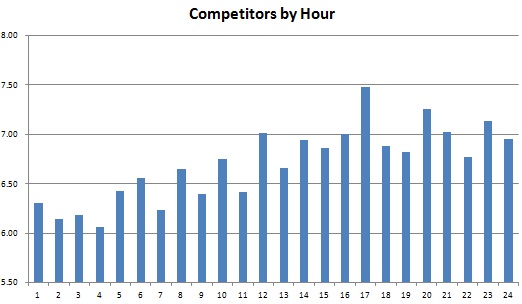3 Tips For Addressing the Rising Cost of Branded CPCs
While CPCs are on a decline, branded CPCs are on a rise. Reviewing Quality Score and competitors, and bid optimization are a few ways search marketers can cope with that discrepancy.
While CPCs are on a decline, branded CPCs are on a rise. Reviewing Quality Score and competitors, and bid optimization are a few ways search marketers can cope with that discrepancy.
There has been a lot of talk recently about Google’s CPC prices and what is influencing its decreases over the past few quarters. Many have said that mobile is a big cause, while Google has offered up YouTube as one of the key drivers. Whatever the reason, CPCs have decreased each of the last 11 quarters.
The one place that has bucked this trend is branded CPCs, which I spoke about to Ad Age last month. In this column, I’m going to dive a bit deeper on the topic. This year, our agency has seen about a 41 percent increase in branded CPCs. Below is a graphic comparing our CTR and CPCs for branded terms. As you can see, the trend line is up for both items. In my opinion, it doesn’t matter in isolation if your CTR is going up at the same time as your CPC, given how many factors impact this metric.
So with all this complication and data showing CPCs are rising for branded terms, what can we do as search marketers to address it?
In the Ad Age article, I mentioned Google giving stock answers when being pressed on this issue. I still think that is the case, but not because they are dodging and hedging. CPCs are calculated roughly the same way they’ve always been calculated, which requires a stock answer.
There have been some changes – such as mobile-friendliness and landing page quality – but overall, quality score times your bid is the rough idea. Google built its business off this model and the thought that it could be raising the floor to drive results is far more risky than potentially rewarding. If you are experiencing this change, what can you do?
When is the last time you looked at your quality score and the various factors that influence it? I think most of us take this measurement for granted, primarily because you never want to optimize based on Quality Score as an end metric.
However, you do want to be aware of various changes you make to things like your landing pages, ad copy, and keyword relevance. Below is a real example for a client. What you can see is that as the Quality Score drops down, the CPC rises. We made some changes to improve Quality Score and the average CPC started to go back down again. I expect this trend to continue. To better understand your own data, you can run reports in AdWords.
Consider the popularity of online advertising over the past few years. Despite Google’s CPCs decreasing, they have experienced tremendous growth in search revenue. This is due to user behavior, but also new competitors that are entering the marketplace, both small business owners and larger brands who haven’t traditionally played in the branded paid space.
Understanding how competitive the marketplace has gotten over time will help provide some insight into how your specific data points may be impacted. Below is some data just looking at one day how competitors increase by hour. The same can be said if you trend the data over time.
 3. Bid Optimization
3. Bid OptimizationMany brands and advertisers optimize brand as a vanity metric, with a “Be No. 1 at all costs” mentality. I think this is something that should be challenged, and treated the same as all keywords and media placements. I think you will find that closer bid optimization would be valuable for branded keywords, as well.
For example, if your rank goes from 1.1 to 1.3 and the CPC decrease is $0.25, is the incremental traffic worth the incremental costs? There is a real opportunity to be more efficient and extract value of the high click-through-rate as the brand owner.
At the end of the day, branded CPCs are on the rise under the guidelines that Google set many moons ago. We have a responsibility to operate within the rules of the system. There are many factors at play here and our ability to take a proactive responsibility for the optimizations we make is key.